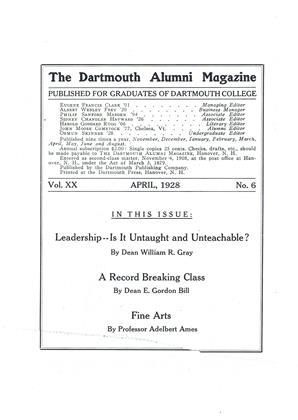The American People and Nation. By Rolla M. Tryon, Professor of the Teaching of History in the University of Chicago and Charles R. Lingley, Professor of History in Dartmouth College. New York: Ginn and Company. 1927. 654 pp.
This review of "The American People and Nation" is written from the standpoint of its aid to the technique of teaching.
The sincerity of presentation in this history text for the Junior High School grades is certainly most commendable. The authors have treated their characters quite like human beings. In striking contrast to that implication of perfection frequently attempted by other writers it is indicated that even George Washington may have made a mistake when he divided his army, placing part of it on Long Island and the other part in New York City.
One finds pleasure in the clear and interesting style of the book, which reads more like fiction than like the traditional history test, since most of the details have been relegated to the footnotes.
The book is not divided into chapters but into eight chronological divisions; one division, for example, being organized as follows: Rebuilding the Nation. 1865-1900
Foreword.
Frontispiece.
Table of Contents.
Two Twenty-four Book Libraries.
Unit I. Recovering From the Civil War.
Unit 11. Population, Immigration, and the West.
Unit 111. The American City.
Unit IV. Significant Changes in Industry. 1865-1900.
Unit V. Discoveries, Inventions, and Improvements Affecting Everyday Life.
Unit VI. Educational, Cultural, and Social Changes. 1865-1900.
Unit VII. Significant Political Questions and General Unrest. 1876-1896.
Unit VIII. Foreign Relations and the Spanish-American War.
Topics for Debate.
Notebook Assignments.
Review Exercises.
Each unit of a division is further broken up into topics; one advantage of this organization being the ease with which it lends itself to the creation of interest in advance assignments.
Attention should be called to the relative importance which the Spanish-American War is given in the division previously outlined. There is a splendid emphasis given to such things as Social and Cultural changes in the country and a very thorough presentation of our material progress. There seems to be a definite and commendable effort to minimize the space devoted to the treatment of war.
Several praiseworthy devices have been used for arousing interest. Thus, for example, two libraries accompany each division, one a selection of reference books and the other a list of story books. The authors, moreover, seem to have taken great pains in this selection. The inclusion of a story book library is especially valuable because of the assistance it may give in raising the general level of pleasure reading. There are more than fifty maps and graphs which are practical and well chosen. The frontispieces and many of the maps are attractively colored. A considerable number of small pictures, having a decided educational value, are modern. Many of them illustrate striking contrasts such as Wall Street about 1880 and again in 1927.
There are many suggestions for "projects and activities" which provide the teacher with a variety of ways of creating interest. The review of a division is assisted by offering topics for debate and questions for discussion which make collateral reading imperative.
Mental attitudes and habits are considered an important by-product of the educational process. It seems likely that this book will create a desire for more knowledge. .If that desire is satisfied, the student will of necessity use the library suggestions and at the same time build up very desirable reading habits.
"The American People and Nation" is a thoroughly delightful story. It should serve as a history guide for the seventh or eighth grade child and the result of its use should be quite satisfactory.
Former Professor F. E. Austin is the author of an article in the March issue of School ArtsMagazine entitled "Furniture for Dolly's Sleeping Room."
Professor Eric P. Kelly 'O6 is the author of "A Son of Liberty"—a sketch of the life of Tadeusz Kosciuszko which appeared in the February number of St. Nicholas magazine. The March issue of St. Nicholas contains a story by Professor Kelly "When Pan Stefan Came to Grudziadz."
 View Full Issue
View Full Issue
More From This Issue
-
 Article
ArticleLEADERSHIP-IS IT UNTAUGHT AND UNTEACHABLE
April 1928 By William R. Gray '04 -
 Lettter from the Editor
Lettter from the EditorEditorial Comment
April 1928 -
 Class Notes
Class NotesClass of 1899
April 1928 By Louis P. Benezet -
 Class Notes
Class NotesClass of 1921
April 1928 By Herrick Brown -
 Article
ArticleTHE UNDERGRADUATE CHAIR
April 1928 -
 Class Notes
Class NotesClass of 1891
April 1928 By Frank E. Rowe








